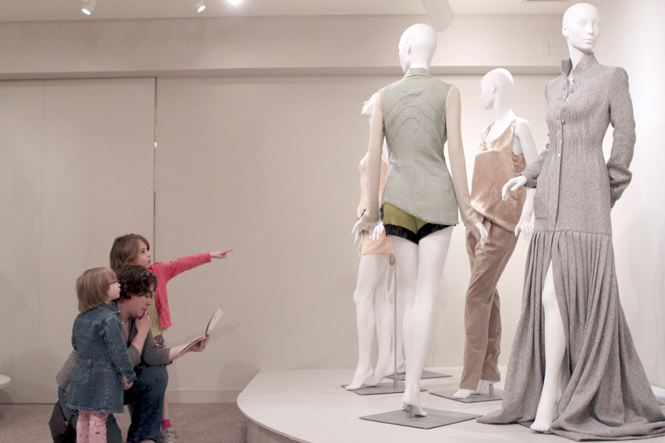KSU Museum opens sustainable fashion exhibition
April 18, 2011
For Noel Palomo-Lovinski, associate professor at the School of Fashion Design and Merchandising, sustainability is nothing new.
She taught a class about sustainability last spring and is the guest curator for Sustainable Fashion: Exploring the Paradox, a new exhibition at the Kent State University Museum dedicated to sustainable fashion practices, such as organic fabrics, printing/dyeing, waste and fair trade production.
Palomo-Lovinski wants the public to think about personal clothing choices regarding what and how they buy it. For fashion design students, she wants them to think about how they can incorporate sustainability in their own designs. For fashion merchandising students, she wants them to think about how they are going to incorporate and market sustainable clothing into their business choices.
“I think sustainability is an extremely important issue,” Palomo-Lovinski said. “The fashion industry is overwhelmingly responsible for some waste and environmental damage.”
The idea was proposed in September, and Palomo-Lovinski made a quick preparation for the exhibition. She borrowed the garments from companies, fashion designers and Earth Pledge FutureFashion, an organization that helps the fashion industry transition to sustainable materials.
Exhibition garments range from high-end designer pieces by Yves Saint Laurent Rive Gauche and Stella McCartney to more affordable lines such as American Apparel and Patagonia.
The clothing has all contemporary pieces and no historical examples, which is different from many exhibitions in the museum.
“We wanted to begin to explore sustainability in fashion,” museum director Jean Druesedow said. “The fashion industry is complex because there’s always a search for the cheapest labor and least expensive kind of productions.”
The exhibition looks at the paradox of people always wanting something new, but in order to have something new, the cycle continues and becomes more wasteful, Druesedow said. “In order to achieve that, they use far more than they ever sell and then have to dispose of it. Sometimes, the most economical production methods are also very wasteful in resources.”
The exhibition is divided into sections with each section addressing a certain aspect of sustainability. A few graphics on the walls show more information. For example, one graphic shows how one pair of jeans is designed in New York, made and shipped around Asia and eventually sold in Los Angeles. Another pie chart shows how Kent State students purchase, use and dispose of clothing.
Garments in the exhibition ranged from delicate evening pieces to sportier fleece items. All garments were made from different materials such as hemp, gold silk linen and organic linen.
For example, Patagonia brand jeans are made from organic cotton, and a Donna Karan evening dress was made from tea-stained sasawashi and peace silk.
“I admire several designers and garments for several reasons,” Palomo-Lovinski said. “I admire all of them for taking the stance of sustainability. I think some are ridiculously ingenious, but all of them are unique, and that’s why they were chosen.”
Contact Yelena Tischenko at [email protected].

























